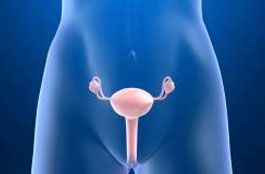Article
Nivolumab Active in Platinum-Resistant Ovarian Cancer
Author(s):
Nivolumab (Opdivo) demonstrated clinical activity and safety in patients with platinum-resistant ovarian cancer.

Nivolumab (Opdivo) demonstrated clinical activity and safety in patients with platinum-resistant ovarian cancer, according to findings from a phase II study recently published in the Journal of Clinical Oncology.1
“Nivolumab has encouraging clinical efficacy for platinum-resistant advanced or relapsed patients with ovarian cancer,” lead study author Junzo Hamanishi, MD, PhD, assistant professor of Gynecology and Obstetrics at Kyoto University in Japan, said when presenting the study’s initial findings at the 2014 ASCO Annual Meeting.2
The single-center, open-label trial randomized 20 patients with platinum-resistant, recurrent, or advanced ovarian cancer to two cohorts. Ten patients were in the low-dose arm and received nivolumab at 1 mg/kg, while the remainder were in the high-dose arm and received the agent at 3 mg/kg. The median age was 60 years and patients had an ECOG performance status of 0 or 1.
Nivolumab was administered intravenously every 2 weeks for up to 1 year or until disease progression occurred. One treatment cycle consisted of 4 doses administered 2 weeks apart over a total of 8 weeks. Patients received a maximum of 6 cycles and dose modification was not permitted.
Lesions were evaluated by CT scan every 2 months for up to 1 year or until disease progression. Best overall response was the trial’s primary endpoint. Secondary endpoints included drug safety, progression-free survival (PFS), overall survival (OS), disease control rate, and adverse events (AEs).
The response rate for the overall study population was 15% (95% CI, 3.2-37.9), and the disease control rate was 45% (95% CI, 23.1-68.5). PFS was 3.5 and 3.0 months in the 1-mg/kg and 3-mg/kg cohorts, respectively. Median OS was 16.1 months in the low-dose arm, while OS for the high-dose arm was not evaluated because data for greater than 50% of patients were censored. Combined OS was 20 months.
In the low-dose cohort, 1 patient had partial response (PR) and 4 had stable disease, for an objective response rate of 10% (95% CI, 0.3-44.5) and a disease control rate of 50% (95% CI, 18.7-81.3). However, the patient with a PR, which lasted for 5 months, ceased treatment with nivolumab due to adverse events. Disease recurred after 3 months following withdrawal from treatment.
In the high-dose cohort, 2 patients experienced a complete response and 2 had stable disease, yielding an ORR and disease control rate of 20% (95% CI, 2.5-55.6) and 40% (95% CI, 12.2-73.8), respectively.
There were no significant differences in severity and frequency of AEs between the two arms. Nivolumab was discontinued in two patients due to treatment-related thyroiditis.
“The 3 mg/kg dose of nivolumab may be more favorable than the 1 mg/kg dose for ovarian cancer, because this dose showed better efficacy without a significant increase in toxicity,” the authors wrote.
Across the overall study population, the most common treatment-related AEs were increased serum AST, hypothyroidism, decreased serum albumin, fever, increased serum ALT, maculopapular rash, arthralgia, arrhythmia, fatigue, and anemia.
Grade 3/4 AEs were reported as lymphocytopenia (n = 3), decreased albumin (n = 2), anemia (n = 3), fever (n = 1), increased ALT (n = 1), and maculopapular rash (n =1). One patient in the low-dose cohort had two grade 3 events of disorientation and gait disorder after developing a fever that lasted longer than 1 month. Another patient in the high-dose cohort had grade 3 fever and deep vein thrombosis. This patient experienced objective antitumor regression after being treated for these conditions.
“The frequencies of arrhythmias and elevated AST were relatively higher in this study than in larger previous studies of nivolumab for other solid tumors, but all of these events were grade 1 or 2 and were controllable,” the authors noted.
Analysis by immunohistochemistry on all tumor specimens showed that 16 patients had high PD-L1 expression and 4 had low expression. Objective responses occurred in 2 of the 16 high PD-L1 patients and nonresponse occurred in 2 of the low-expression patients. PD-L1 expression was not significantly correlated with objective response, the authors noted (P = .509).
The study may have problems with the timing of tumor sampling, the authors noted, as most samples were acquired during patients’ primary operations and not during biopsies before treatment with nivolumab, as was done with solid tumors.
The authors previously reported that PD-L1 expression was associated with poor prognosis in ovarian cancer, and that PD-L1 promoted disease progression by inducing host immunosuppression of peripheral cytotoxic CD8-positive T-cell lymphocytes, suggesting that PD-1/PD-L1 signaling is a potential target in ovarian cancer, though it could not be determined whether PD-L1 expression is a true biomarker for the antitumor effect against ovarian cancer. Additional research is needed, the authors said.
“In conclusion, nivolumab demonstrated encouraging clinical efficacy and tolerability in patients with platinum-resistant ovarian cancer,” the authors noted. “Therefore, this study indicates the merit of a large-scale investigation to evaluate the priority of nivolumab for platinum-resistant ovarian cancer, and we plan to perform such a trial with a pharmaceutical company.”
References
- Hamanishi J, Mandai M, Ikeda T, et al. Safety and antitumor activity of anti—PD-1 antibody, nivolumab, in patients with platinum-resistant ovarian cancer [published online September 8, 2015]. J Clin Oncol. doi:10.1200/JCO.2015.62.3397
- Hamanishi J. Efficacy and safety of anti—PD-1 antibody (nivolumab: BMS-936558, ONO-4538) in patients with platinum-resistant ovarian cancer. Presented at: 2014 ASCO Annual Meeting; May 30-June 2, 2014; Chicago, Illinois. Abstract 5511.









